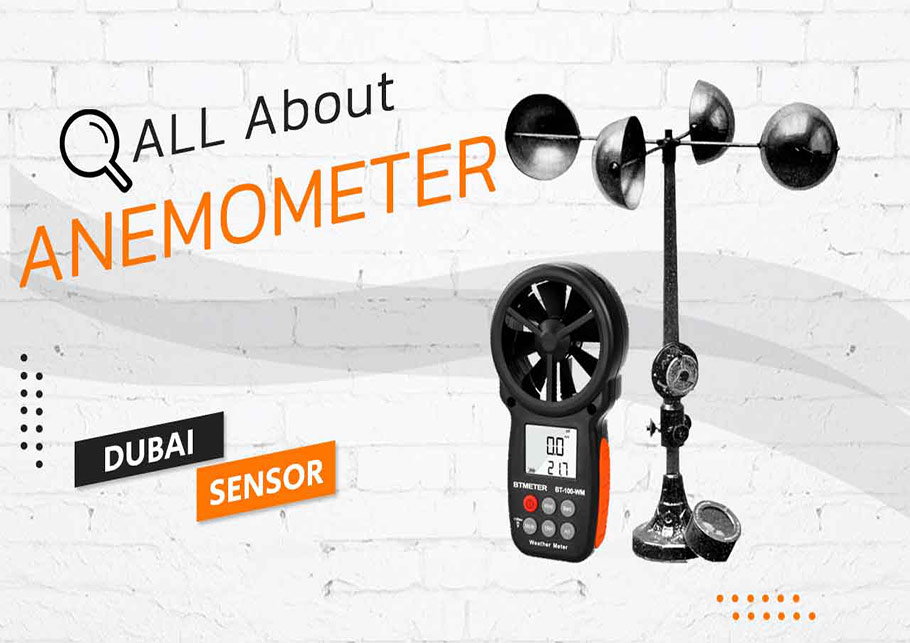Why an Anemometer is Necessary for Your Environmental Information Collection
Why an Anemometer is Necessary for Your Environmental Information Collection
Blog Article
Exploring the Functions and Advantages of Anemometers for Climate Fanatics and Specialists
From mug anemometers to sonic anemometers, each kind brings its one-of-a-kind collection of advantages and applications, dropping light on various elements of climatic problems. As we delve right into the features and benefits of anemometers, a deeper understanding arises not just of prevailing climate phenomena yet likewise of the more comprehensive effects for industries like wind energy production and ecological research.
Value of Anemometers in Weather Condition Monitoring
Anemometers play an important role in weather condition surveillance by supplying accurate dimensions of wind speed, helping in forecasting and understanding weather condition patterns. These tools, ranging from traditional cup anemometers to modern-day ultrasonic anemometers, are necessary for meteorologists, researchers, and weather condition fanatics alike. By measuring wind rate, anemometers assist in determining the intensity of climate sensations such as cyclones, tornados, and tornadoes. Additionally, they provide beneficial data for aeronautics, maritime operations, and numerous industries that are sensitive to wind conditions.

Kinds of Anemometers and Their Applications
With the critical duty anemometers play in climate monitoring and forecasting, recognizing the different kinds of these instruments and their applications comes to be crucial for specialists and fanatics in the area. The most common kinds of anemometers include cup anemometers, vane anemometers, hot-wire anemometers, and ultrasonic anemometers. Mug anemometers contain 3 or four mugs placed on horizontal arms that rotate with the wind, gauging its speed. Vane anemometers, on the other hand, use an openly turning vane to align with the wind instructions, offering both wind rate and instructions measurements. Hot-wire anemometers run based upon the principle of convective heat transfer, where the cooling impact of the air flow is determined to figure out wind speed. Ultrasonic anemometers make use of ultrasonic acoustic wave to calculate wind speed and instructions precisely.
Mug anemometers are appropriate and durable for basic climate surveillance, while vane anemometers are favored for directional measurements. Ultrasonic anemometers are non-intrusive and supply high precision, commonly made use of in study and specialized weather condition surveillance applications.
Advantages of Using Anemometers in Forecasting
In weather forecasting, the use of anemometers provides vital advantages for improving the accuracy of weather projecting. Anemometers determine wind speed and instructions, providing important data for anticipating weather condition patterns. By integrating wind information into forecasting models, meteorologists can much better comprehend the activity of climate systems, expect modifications in weather, and issue more specific forecasts.
Furthermore, anemometers play a vital duty in assessing possible weather condition risks. Keeping track of wind speeds assists forecasters predict extreme climate occasions such as typhoons, hurricanes, try this website and wintertime storms with higher accuracy. This very early warning system enables authorities to release timely signals and execute essential security procedures, decreasing the threats to life and home.
Additionally, anemometers help in optimizing renewable resource production. By assessing wind patterns, meteorologists can determine ideal locations for wind ranches and forecast energy outcome, adding to the efficient generation of wind power.

Anemometers in Wind Energy Production
Provided the essential role anemometers play in offering precise wind information for weather condition forecasting and danger evaluation, their value includes the realm of wind energy production. Anemometers are crucial tools in the area of moved here wind power, where the dimension of wind rate and direction is essential for establishing the expediency and efficiency of wind turbine installations. By precisely determining wind speeds at differing elevations, anemometers aid optimize the positioning and layout of wind generators to take full advantage of power result.
In wind ranches, anemometers are tactically put to gather real-time wind data that is used to assess the prospective energy manufacturing of a website. This data contributes in determining the financial stability of wind power tasks and in projecting energy generation to ensure grid stability. In addition, anemometers help in keeping track of wind conditions to optimize turbine efficiency, stop damage from high winds, and ensure the safety of employees operating in the vicinity of wind generators.
Enhancing Weather Condition Understanding With Anemometers

Anemometers play a crucial function in enhancing our understanding of microclimates. These localized climate conditions can vary considerably from broader local projections, making it vital to have precise data for certain areas. anemometer. By strategically putting anemometers in various locations, scientists can gather comprehensive information on just how wind acts in different terrains, city settings, or bodies of water
Additionally, anemometers contribute to improving climate forecasting models by providing real-time information on wind habits. This information is specifically valuable for forecasting serious weather occasions, enhancing agricultural techniques, and supporting sectors like air travel and maritime navigation. In general, anemometers are important tools that enable us to delve much deeper into the intricacies of weather systems, eventually bring about more better-informed decisions and exact predictions.
Verdict
In final thought, anemometers play a crucial duty in weather condition surveillance and projecting by measuring wind speed and direction. Anemometers likewise have applications in wind power manufacturing, further highlighting their importance in both weather forecasting and eco-friendly power sectors.
From cup anemometers to sonic anemometers, each type brings its distinct set of applications and benefits, dropping light on numerous facets of climatic problems. These tools, varying from typical cup anemometers to contemporary ultrasonic anemometers, are necessary for meteorologists, scientists, and climate fanatics alike. The most usual kinds of anemometers consist of mug anemometers, vane anemometers, hot-wire anemometers, and ultrasonic anemometers. Mug anemometers are robust and suitable for general weather surveillance, while vane anemometers are preferred for directional dimensions. Anemometers are crucial tools in the area of wind power, where the dimension of wind speed and direction is essential for identifying the expediency visit their website and efficiency of wind turbine installations.
Report this page